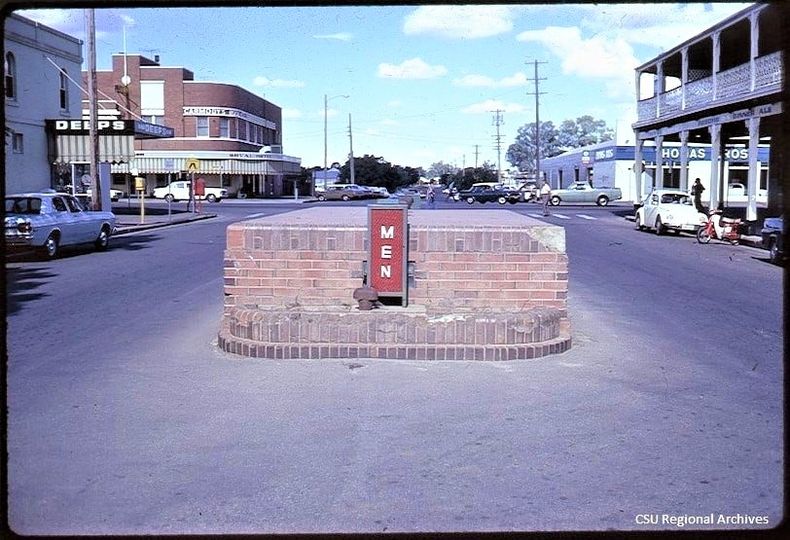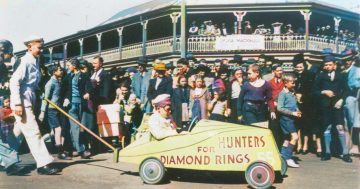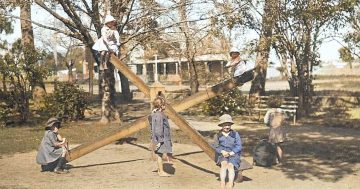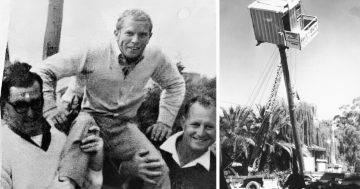
Wagga’s downstairs dunny is now buried under the street. Photo: Charles Sturt University Archives.
This week, the Museum of the Riverina takes us back to a time of rumoured tunnels under Forsyth Street and a subterranean dunny in the CBD!
When I first moved to Wagga in 2001, I used to hear a lot about how the face of the city had changed.
I heard about the businesses that had come and gone, and how the streetscapes weren’t what they used to be – especially in the CBD.
One piece of Wagga’s history that people loved talking about was the infamous underground toilet! And I was intrigued. It was years before I saw a photo of it.
This underground men’s toilet was located in the middle of Forsyth Street opposite the Union Club Hotel.
On the other corners, you will notice Deep’s Menswear, Carmody’s Royal Hotel (now the Sturt Mall) and Thomas Bros Toyota.
As you can see, the brickwork isn’t pristine. This is due to the fact that drivers sometimes ran into the structure because it was in the middle of a busy street. I’m sure many more cursed as they had near misses.
Apparently, the underground toilet was rather pungent on a hot day and many a mother rushed her child past the loo while crossing the street!
Public lavatories in Australia were first recognised as a need in metropolitan centres such as Sydney – where the council installed two cast-iron urinals or ”pissoirs” in The Rocks in 1880.
The first underground toilet in Sydney opened on 24 May, 1901, in Moore Street, between Pitt and Castlereagh streets in the CBD.
Social concerns about public respectability in the late-19th and early 20th centuries increasingly focused on antisocial street behaviour.
It was not uncommon to see men urinating (or worse) in public because there were no facilities available to them.
Wagga only had this one underground toilet, but why was it built underground?
There were probably numerous practical reasons. Underground toilets took up less space on busy streets and most importantly, they were discreet, helping to hide ”objectionable contrivances” from the general public.
In December 1973, Wagga Wagga City Council decided to close the toilet. The reasons given for its removal were that it was antiquated and no longer used regularly by the public.
It was also seen as a traffic hazard and the cost of removing and filling it would be nominal.
In March 1974, a bulldozer was used to push down the walls and fill in the toilet. A truly unique piece of Wagga’s history lost forever.
I have one question remaining, though. What public facilities were available to Wagga’s women!?
















